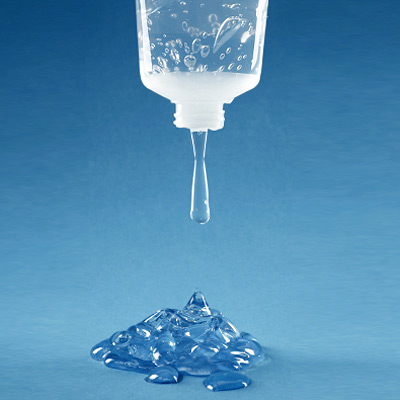Female ejaculation
Ok I lifted this verbatim from Wikipedia but consider it the first of a few on this subject. I figured lets start with the facts and then see what other anecdotal information we can find.
Female ejaculation is the expulsion of fluid by human females from the paraurethral ducts through and around the female urethra during or before an orgasm. It is also known colloquially as gushing or squirting,[1] although these are considered to be different phenomena in some research publications.[2] The exact source and nature of the fluid continue to be a topic of debate among medical professionals, which is also related to doubts over the existence of the G-Spot.
Reports
In questionnaire surveys, 35–50% of women report that they have at some time experienced the gushing of fluid during orgasm.[3][4][5] Other studies find anywhere from 10–69%, depending on the definitions and methods used.[6][7] For instance Kratochvíl (1994) surveyed 200 women and found that 6% reported ejaculating, an additional 13% had some experience and about 60% reported release of fluid without actual gushing.[8] Reports on the volume of fluid expelled vary considerably[9] starting from amounts that would be imperceptible to a woman, to mean values of 1–5 ml.[10]
The suggestion that women can expel fluid from their genital area as part of sexual arousal has been described by women’s health writer Rebecca Chalker as “one of the most hotly debated questions in modern sexology.”[11] Female ejaculation has been discussed in anatomical, medical, and biological literature throughout recorded history. The dichotomy between the interest devoted to female ejaculation and the basic acceptance of its male counterpart has been questioned by feminist writers.[12]
Western literature
16th to 18th century
In the 16th century, the Dutch physician Laevinius Lemnius, referred to how a woman “draws forth the man’s seed and casts her own with it.”[13] In the 17th century, François Mauriceau described glands at the urethral meatus that “pour out great quantities of saline liquor during coition, which increases the heat and enjoyment of women.”[14] This century saw an increasing understanding of female sexual anatomy and function,[15] in particular the work of the Bartholin family in Denmark.
De Graaf
In the 17th, century the Dutch anatomist Regnier de Graaf wrote an influential treatise on the reproductive organs Concerning the Generative Organs of Women which is much cited in the literature on this topic. De Graaf discussed the original controversy but supported the Aristotelian view.[16][17] He identified the source as the glandular structures and ducts surrounding the urethra.
[VI:66-7]The urethra is lined by a thin membrane. In the lower part, near the outlet of the urinary passage, this membrane is pierced by large ducts, or lacunae, through which pituito-serous matter occasionally discharges in considerable quantities.
Between this very thin membrane and the fleshy fibres we have just described there is, along the whole duct of the urethra, a whitish membranous substance about one finger-breadth thick which completely surrounds the urethral canal… The substance could be called quite aptly the female ‘prostatae’ or ‘corpus glandulosum’, ‘glandulous body’…The function of the ‘prostatae’ is to generate a pituito-serous juice which makes women more libidinous with its pungency and saltiness and lubricates their sexual parts in agreeable fashion during coitus.
[VII:81] The discharge from the female ‘prostatae’ causes as much pleasure as does that from the male ‘prostatae’
He identified [XIII:212] the various controversies regarding the ejaculate and its origin, but stated he believed that this fluid “which rushes out with such impetus during venereal combat or libidinous imagining” was derived from a number of sources, including the vagina, urinary tract, cervix and uterus. He appears to identify Skene’s ducts, when he writes [XIII: 213] “those [ducts] which are visible around the orifice of the neck of the vagina and the outlet of the urinary passage receive their fluid from the female ‘parastatae’, or rather the thick membranous body around the urinary passage.” However he appears not to distinguish between the lubrication of the perineum during arousal and an orgasmic ejaculate when he refers to liquid “which in libidinous women often rushes out at the mere sight of a handsome man.” Further on [XIII:214] he refers to “liquid as usually comes from the pudenda in one gush.” However, his prime purpose was to distinguish between generative fluid and pleasurable fluid, in his stand on the Aristotelian semen controversy.
19th century
Krafft-Ebing’s study of sexual perversion, Psychopathia Sexualis (1886), describes female ejaculation under the heading “Congenital Sexual Inversion in Women” as a perversion related to neurasthenia and homosexuality.[18]
the intersexual gratification among …women seems to be reduced to kissing and embraces, which seems to satisfy those of weak sexual instinct, but produces in sexually neurasthenic females ejaculation
It is also described by Freud in pathological terms in his study of Dora (1905), where he relates it to hysteria.[19]
The pride taken by women in the appearance of their genitals is quite a special feature of their vanity; and disorders of genitals which they think calculated to inspire feelings of repugnance or even disgust have an incredible power of humiliating them, of lowering their self-esteem, and of making them irritable, sensitive, and distrustful. An abnormal secretion of the mucous membrane of the vagina is looked upon as source of disgust.
However, women’s writing of that time portrayed this in more positive terms. Thus we find Almeda Sperry writing to Emma Goldman in 1918, about the “rhythmic spurt of your love juices”.[12][20] Anatomical knowledge was also advanced by Alexander Skene’s description of para-urethral or periurethral glands (glands around the urethra) in 1880, which have been variously claimed to be one source of the fluids in the ejaculate, and now commonly referred to as the Skene’s glands.[21]
20th century
Early 20th century understanding
Female ejaculation is mentioned as normal in early 20th century ‘marriage manuals’, such as TH Van de Velde’s Ideal Marriage: Its Physiology and Technique (1926). Certainly van de Velde was well aware of the varied experiences of women. [22]
It appears that the majority of laymen believe that something is forcibly squirted (or propelled or extruded), or expelled from the woman’s body in orgasm, and should so happen normally, as in the man’s case. Finally it is just as certain that such an ‘ejaculation’ does not take place in many women of sexually normal functions, as that it does take place in others.
Yet the subject was largely ignored for most of the early part of the century. In 1948, Huffman, an American gynaecologist, published his studies of the prostatic tissue in women together with a historical account and detailed drawings. These clearly showed the difference between the original glands identified by Skene at the urinary meatus, and the more proximal collections of glandular tissue emptying directly into the urethra. [23]
The urethra might well be compared to a tree about which and growing outward from its base are numerous stunted branches, the paraurethral ducts and glands
To date most of the interest had focused on the substance and structure rather than function of the glands. A more definitive contemporary account of ejaculation appeared shortly after, in 1950, with the publication of an essay by Gräfenberg based on his observations of women during orgasm.[24]
An erotic zone always could be demonstrated on the anterior wall of the vagina along the course of the urethra…analogous to the male urethra, the female urethra also seems to be surrounded by erectile tissues…In the course of sexual stimulation, the female urethra begins to enlarge and can be felt easily. It swells out greatly at the end of orgasm…Occasionally the production of fluids is …profuse… If there is the opportunity to observe the orgasm of such women, one can see that large quantities of a clear transparent fluid are expelled not from the vulva, but out of the urethra in gushes. At first I thought that the bladder sphincter had become defective by the intensity of the orgasm. Involuntary expulsion of urine is reported in sex literature. In the cases observed by us, the fluid was examined and it had no urinary character. I am inclined to believe that “urine” reported to be expelled during female orgasm is not urine, but only secretions of the intraurethral glands correlated with the erotogenic zone along the urethra in the anterior vaginal wall. Moreover the profuse secretions coming out with the orgasm have no lubricating significance, otherwise they would be produced at the beginning of intercourse and not at the peak of orgasm.
However this paper made little impact, and was dismissed in the major sexological writings of that time, such as Kinsey (1953)[25] and Masters and Johnson (1966),[26] equating this “erroneous belief” with urinary stress incontinence. Although clearly Kinsey was familiar with the phenomenon, commenting that (p. 612);
Muscular contractions of the vagina following orgasm may squeeze out some of the genital secretions, and in a few cases eject them with some force
as were Masters and Johnson ten years later, who observed (pp 79–80):
Most women do not ejaculate during orgasm…we have observed several cases of women who expelled a type of fluid that was not urine
(emphasis in original) yet dismissed it (p. 135) – “female ejaculation is an erroneous but widespread concept”, and even twenty years later in 1982,[27] they repeated the statement that it was erroneous (p. 69–70) and the result of “urinary stress incontinence”.
Late 20th century awareness
The topic did not receive serious attention again until a review by Josephine Lowndes Sevely and JW Bennett appeared in 1978.[28] This latter paper, which traces the history of the controversies to that point, and a series of three papers in 1981 by Beverly Whipple and colleagues in the Journal of Sex Research,[29][30][31] became the focal point of the current debate. Whipple became aware of the phenomenon when studying urinary incontinence, with which it is often confused.[32] As Sevely and Bennett point out, this is “not new knowledge, but a rediscovery of lost awareness that should contribute towards reshaping our view of female sexuality”. Nevertheless, the theory advanced by these authors was immediately dismissed by many other authors, such as physiologist Joseph Bohlen,[33] for not being based on rigorous scientific procedures, and psychiatrist Helen Singer Kaplan (1983) stated:[34]
Female ejaculation (as distinct from female urination during orgasm) has never been scientifically substantiated and is highly questionable, to say the least.
Even some radical feminist writers, such as Sheila Jeffreys (1985) were dismissive, claiming it as a figment of male fantasy:[35]
There are examples in the sexological literature of men’s sexual fantasies about lesbian sexuality. Krafft-Ebing invented a form of ejaculation for women
It required the detailed anatomical work of Helen O’Connell[36] from 1998 onwards to more properly elucidate the relationships between the different anatomical structures involved. As she observes, the perineal urethra is embedded in the anterior vaginal wall and is surrounded by erectile tissue in all directions except posteriorly where it relates to the vaginal wall. “The distal vagina, clitoris, and urethra form an integrated entity covered superficially by the vulval skin and its epithelial features. These parts have a shared vasculature and nerve supply and during sexual stimulation respond as a unit”.[37][38][39]
Anthropological accounts
Female ejaculation appears in 20th-century anthropological works, such as Malinowski’s Melanesian study, The Sexual Life of Savages (1929), and Gladwin and Sarason’s “Truk: Man in Paradise” (1956). Malinowski states that in the language of the Trobriand Island people, a single word is used to describe ejaculation in both male and female.[40]
Both the male and female discharge are called by the same name (momona or momola), and they ascribe to both the same origin in the kidneys, and the same function, which has nothing to do with generation, but is concerned with lubricating the membrane and increasing pleasure
In describing sexual relations amongst the Trukese Micronesians, Gladwin and Sarason state that “Female orgasm is commonly signalled by urination”.[41] Catherine Blackledge[15] (p. 205) provides a number of examples from other cultures, including the Ugandan Batoro, Mohave Indians, Mangaians, and Ponapese. Amongst the Batoro, older women teach the younger women “kachapati” (spraying the wall) at puberty. (See also Chalker 2002 pp. 531–2, Ladas et al. 1983 pp. 74–5)
A 2007 study on two women involved ultrasound, endoscopy, and biochemical analysis of fluid. The ejaculate was compared to pre-orgasmic urine from the same woman, and also to published data on male ejaculate. In both women, higher levels of PSA, PAP, and glucose but lower levels of creatinine were found in the ejaculate than the urine. PSA levels were comparable to those in males.[6]
Source of fluid
One very practical objection relates to the reported volumes ejaculated since this fluid must be stored somewhere in the pelvis, of which the urinary bladder is the largest source. The actual volume of the para-urethral tissue is quite small. By comparison, male ejaculate varies from 0.2–6.6 ml (0.01–0.22 US fl oz) (95% confidence interval), with a maximum of 13 ml (0.44 US fl oz).[54] Therefore claims of larger amounts of ejaculate are likely to contain at least some amount of urine. The eleven specimens analyzed by Goldberg in 1983,[51] ranged from 3–15 ml (0.1–0.5 US fl oz).[52] One source states that Skene’s glands are capable of excreting 30–50 ml (1–2 US fl oz) in 30–50 seconds,[55] but it is unclear how this was measured and has not been confirmed. One approach is to use a chemical like methylene blue so that any urinary component can be detected.[52] Belzer showed that in one woman he studied, the dye was found in her urine, but not her orgasmic expulsion.[29]
PAP and PSA have been identified in the para-urethral tissues, using biochemical and immunohistochemical methods, suggesting that the ejaculate likely arises from the ducts in these tissues, in a manner homologous to that in the male.[56][57][58][59][60] Another marker common to the prostate/para-urethral tissue in both sexes is Human protein 1.[61]
PSA occurs in urine, and is elevated in post-orgasmic samples compared to pre-orgasmic. Simultaneous collection of ejaculate also showed PSA in both urine and ejaculate in all cases, but in higher concentration in the ejaculate than in the urine.[62]
Function
The physiological function of the purported liquid is unknown. A 2009 paper in Medical Hypotheses suggests that it may have an anti-microbial function, protecting from urinary tract infections.[45]
Controversy, debate and feminist criticism
The debate in the current literature focuses on three threads: the existence of female ejaculation, its source(s) and composition, and its relationship to theories of female sexuality.[12] This debate has been influenced by popular culture, pornography, and physio-chemical and behavioral studies. There is some resistance from feminists to what has been perceived as a male lens in interpreting the data and construct. Often the debate is also tied to the existence of the G-spot;[48][63] stimulation of the anterior vaginal wall involves simultaneous stimulation of the para-urethral tissue, the site of the Skene’s glands and ducts and presumed source of the ejaculated fluid, and therefore it has been variously stated that stimulation of this spot results in ejaculation. These tissues, surrounding the distal urethra, and anterior to the vagina, have a common embryological origin to the prostatic tissue in the male.[64][65]
In an extensive survey, Darling and colleagues claim support for the existence of ejaculation,[5] while in a sharply critical response, Alzate[53][66] states that direct experimentation fails to provide any evidence.[67] Alzate states:
the ignorance and/or confusion still prevalent among women about the anatomy and physiology of their sexual organs may make them mistake either vaginal lubrication or stress urinary incontinence for an “ejaculation”
Shannon Bell argues that the debate is confused by the discussion of two separate phenomena.[specify] She comments that Alzate simply dismisses women’s subjective experiences in favour of rigorous scientific proof, and is typical of male sexologists withholding the validity of experience from women. Bell’s critique lies at the heart of feminist concerns about this debate, namely a tendency to “disregard, reinterpret, and overwrite women’s subjective descriptions.” For some, she states, it is more a matter of belief than of physiology. Bell further questions why feminists have not been more outspoken in defense of women’s control over female ejaculation, pointing out that the literature frames the discussion in only five separate ways; procreation, sexual pleasure, deviance, pathology, and a scientific mystery.[12]
The discussion entered popular culture in 1982 with the publication of the best-selling book The G Spot and Other Recent Discoveries About Human Sexuality, by Ladas, Whipple, and Perry.[68] The book discussed female ejaculation and brought the issue back into discussions of women’s sexuality both in the medical community and among the general public.[11][62][69] This was a popular account of three papers by the authors, the previous year, at the suggestion of Alice Khan Ladas.[29][30][31] Rebecca Chalker notes that this book was largely met with scorn, skepticism and disbelief.[11] The chapter on ‘Female Ejaculation’ is largely based on anecdotal testimony, and illustrates another issue in the debate, the weight placed on anecdotes and small numbers of observations rather than biomedical investigation or clinical trials. Importantly, a number of the women stated that they had been diagnosed with urinary incontinence. The book advances another feminist theory: that because women’s pleasure in their sexuality has been historically excluded, the pleasure of ejaculation has been either discounted or appropriated by health professionals as a physiological phenomenon.[70] Whipple continued to publicise her discoveries, including a 9 min video made in 1981 Orgasmic Expulsions of Fluid in the Sexually Stimulated Female.[71] In 1984, the Journal of Sex Research described the debate surrounding female ejaculation as ‘heated’.[55] Josephine Sevely then followed up her 1978 study by publishing “Eve’s Secrets: A new theory of female sexuality” in 1987, emphasising an integrated rather than fragmented approach to understanding female sexuality, with the clitoris, vagina and urethra depicted as a single sexual organ.[72][73] This not only challenged the traditional fragmentation of female sexuality into clitoral vs. vaginal sensation, but also sexualised the urethra.[12]
The continuing debate is further illustrated in the angry exchange of letters between the author and researchers in the American Journal of Obstetrics and Gynaecology in 2002 following the publication of ‘The G-spot: A modern gynecological myth’ by Terrence Hines.[69] As of 2007,[6][74] and 2008[73] the existence of a female prostate and of ejaculation are a matter of debate, and articles and book chapters continue to appear with subtitles such as “Fact or Fantasy”.[11]







